Skeleton Aksial

Skeleton Aksial
Bones make up the skeletal system of the human body and are responsible for somatic rigidity, storage of different micronutrients, and housing bone marrow. W.

Major Bones Of The Axial Skeleton
The appendicular skeleton includes all of the limb bones, plus the bones that unite each limb with the axial skeleton. The bones that attach each upper limb to the axial skeleton form the pectoral girdle (shoulder girdle). This consists of two bones, the scapula and clavicle. The clavicle (collarbone) is an S-shaped bone located on the anterior.
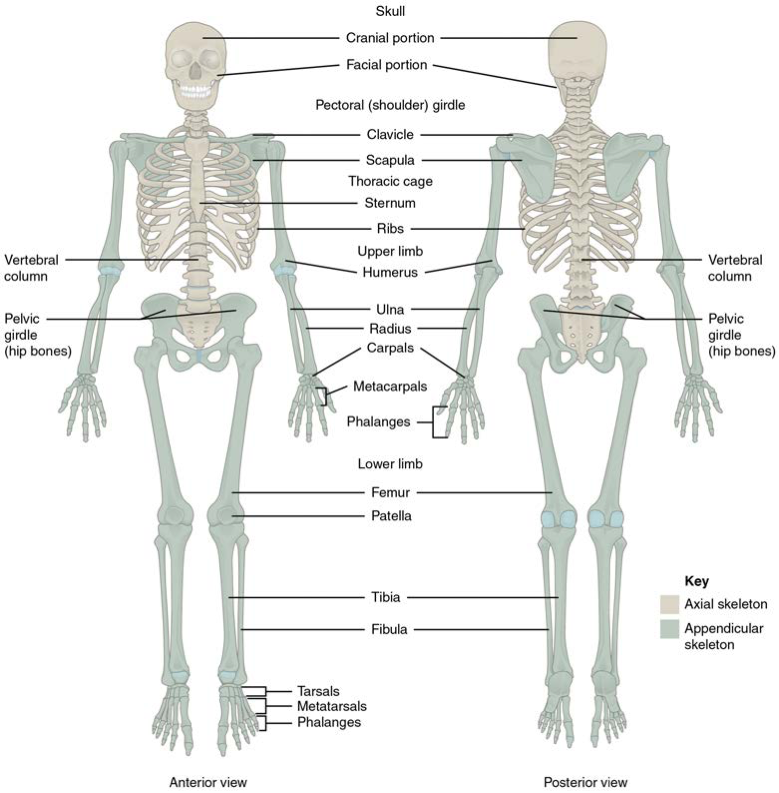
Axial Skeleton Knowlative
The human axial skeleton consists of 81 different bones. It is the medial core of the body and connects the pelvis to the body, where the appendix skeleton attaches. As the skeleton grows older the bones get weaker with the exception of the skull. The skull remains strong to protect the brain from injury. In humans, the axial skeleton serves to.

Major Bones Of The Axial Skeleton
The axial skeleton includes the bones that form the skull, laryngeal skeleton, vertebral column, and thoracic cage. The bones of the appendicular skeleton (the limbs and girdles) "append" to the axial skeleton. 1. Skull Bones Protect the Brain and Form an Entrance to the Body. The skull consists of the cranial bones and the facial skeleton.

secara garis besar kerangka manusia Gavin Dyer
The skeletal system forms the rigid internal framework of the body. It consists of the bones, cartilages, and ligaments. Bones support the weight of the body, allow for body movements, and protect internal organs. Cartilage provides flexible strength and support for body structures such as the thoracic cage, the external ear, and the trachea.
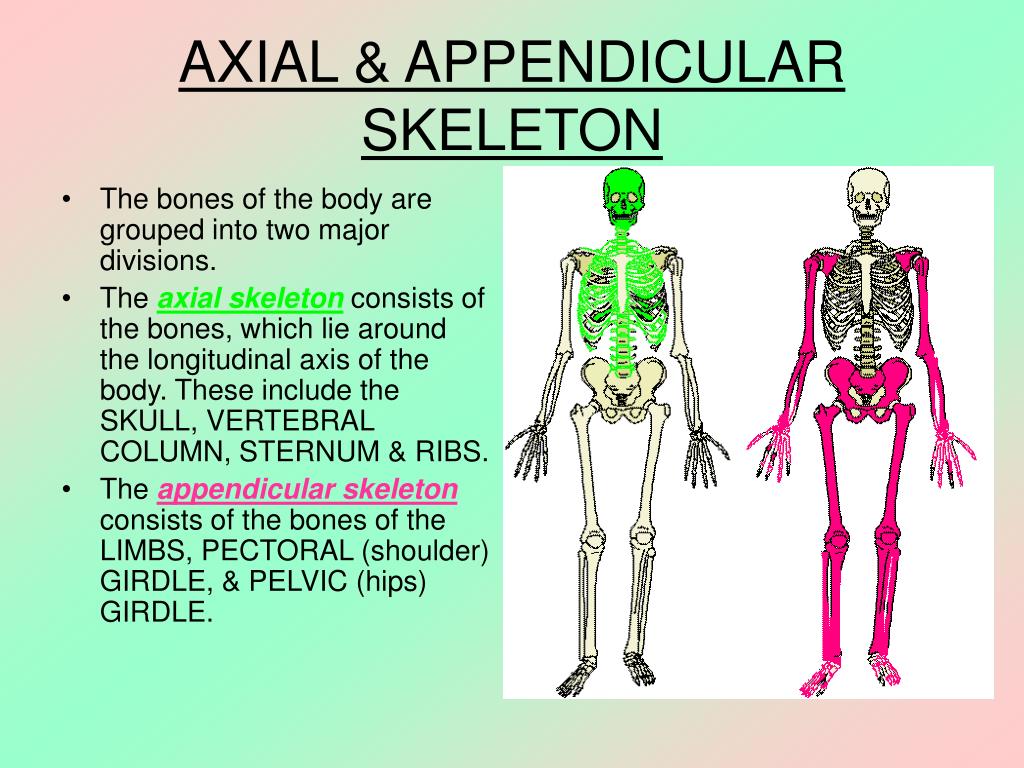
Axial And Appendicular Skeleton Labeling
Axial Skeleton. 7.0 Introduction. 7.1 Divisions of the Skeletal System. 7.2 Bone Markings. 7.3 The Skull. 7.4 The Vertebral Column. 7.5 The Thoracic Cage. 7.6 Embryonic Development of the Axial Skeleton. Chapter 8. The Appendicular Skeleton. 8.0 Introduction. 8.1 The Pectoral Girdle.
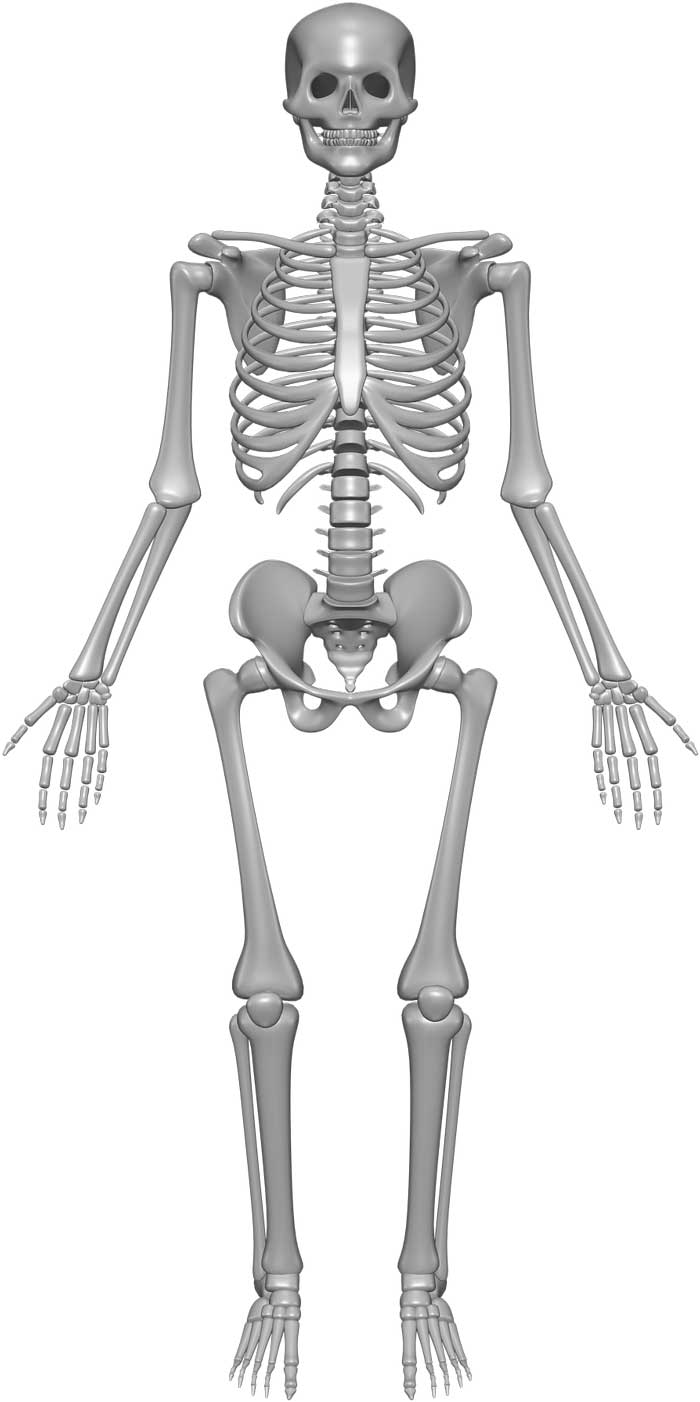
Skeleton System (Structure + Composition + Facts) Science4Fun
The axial skeleton is the part of the skeleton that consists of the bones of the head and trunk of a vertebrate. It consists of 80 bones and is composed of six parts: the skull bones, the ossicles of the middle ear, the hyoid bone, the rib cage, sternum and the vertebral column.
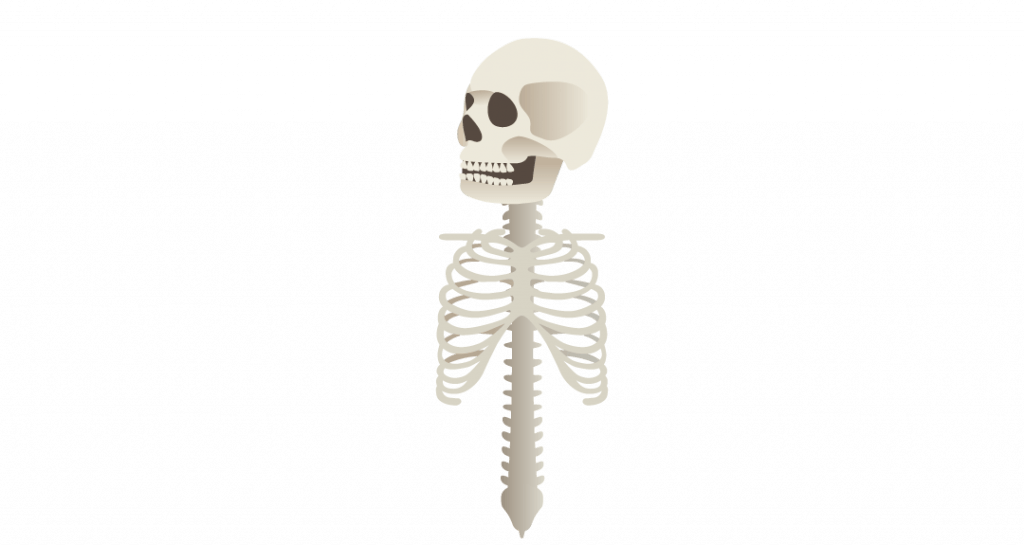
Biologi Rangka Manusia Pahamify Taklukkan UTBK
The axial skeleton serves primarily to support and protect the heart, lungs, and central nervous system, which is made up of the brain and spinal cord. The axial skeleton differs from the appendicular skeleton, which is made up of the bones of the upper and lower limbs. In humans, the axial skeleton is made up of 80 individual bones.

Mengenal Anatomi Tulang Manusia, Disusun Rangka Aksial dan Apendikular Fisiohome
The Axial Skeleton. The axial skeleton forms the vertical, central axis of the body and includes all bones of the head, neck, chest, and back (Figure \(\PageIndex{1}\)). It serves to protect the brain, spinal cord, heart, and lungs. It also serves as the attachment site for muscles that move the head, neck, and back, and for muscles that act across the shoulder and hip joints to move their.

Axial Skeleton Development Medical Embryology Video Lecture VLearning YouTube
The axial skeleton is the central portion of the bony skeleton comprising the head, neck and trunk (80 bones in total). It has many functions including housing and protecting the central nervous system as well as the organs of the chest, abdomen and pelvis. It enables movement and supports the upper and lower limbs ( appendicular skeleton ).

Axial and Appendicular Skeleton
Fig. 7.1: Axial and Appendicular Skeleton . The axial skeleton of the adult consists of 80 bones, including the skull, the vertebral column, and the thoracic cage.The axial skeleton forms the longitudinal axis of the body, the center or midline of the body around which the limbs rotate, much as the earth spins around its center axis. Additionally, the axial skeleton supports the head, neck.
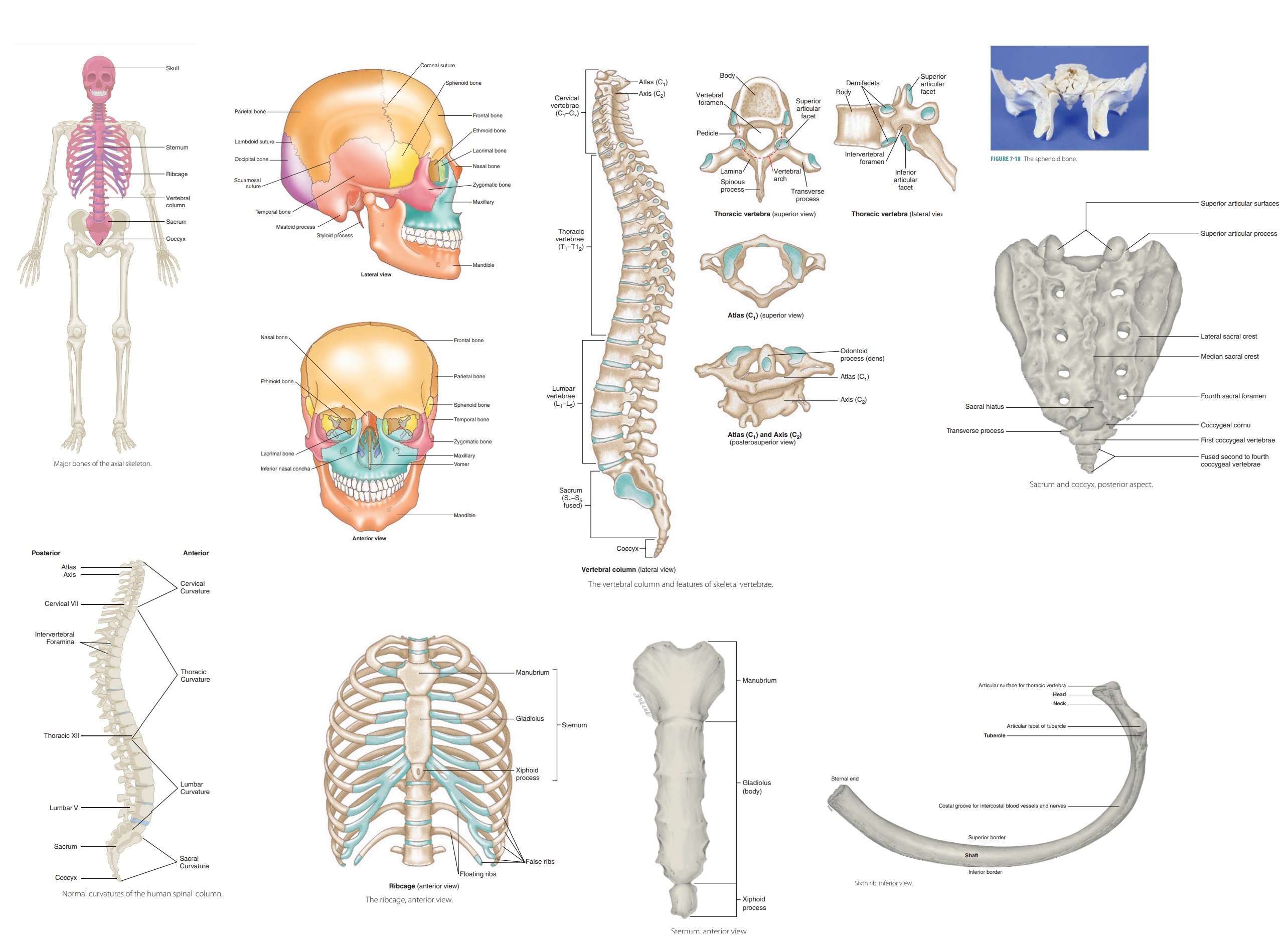
Axial Skeleton Skeletal Organization
The function of the axial skeleton is to provide support and protection for the brain, the spinal cord, and the organs in the ventral body cavity. It provides a surface for the attachment of muscles that move the head, neck, and trunk, performs respiratory movements, and stabilizes parts of the appendicular skeleton. Figure 1.

Tulang Penyusun Rangka Tubuh Manusia AGM MEDICA
Learn for free about math, art, computer programming, economics, physics, chemistry, biology, medicine, finance, history, and more. Khan Academy is a nonprofit with the mission of providing a free, world-class education for anyone, anywhere.
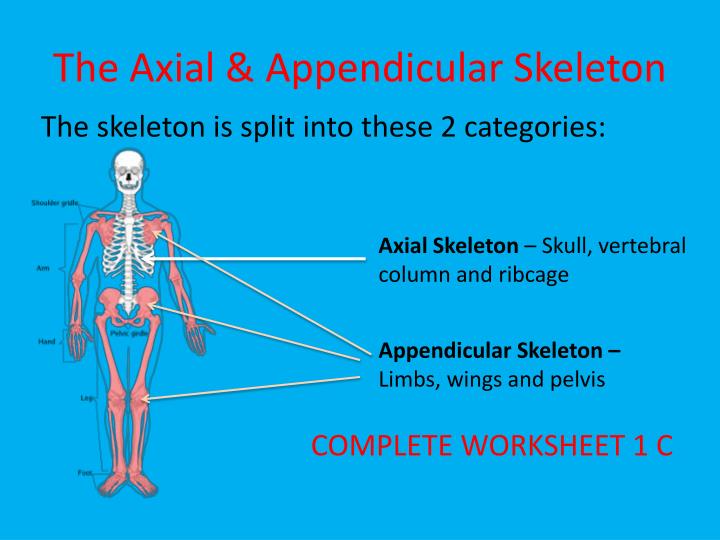
Axial And Appendicular Skeleton Joints
The 14 facial bones are the nasal bones, maxillary bones, zygomatic bones, palatine, vomer, lacrimal bones, inferior nasal conchae, and mandible. Figure 38.3.1 38.3. 1: Cranial and facial bones: The facial bones of the skull form the face and provide cavities for the eyes, nose, and mouth. The cranial bones, including the frontal, parietal.
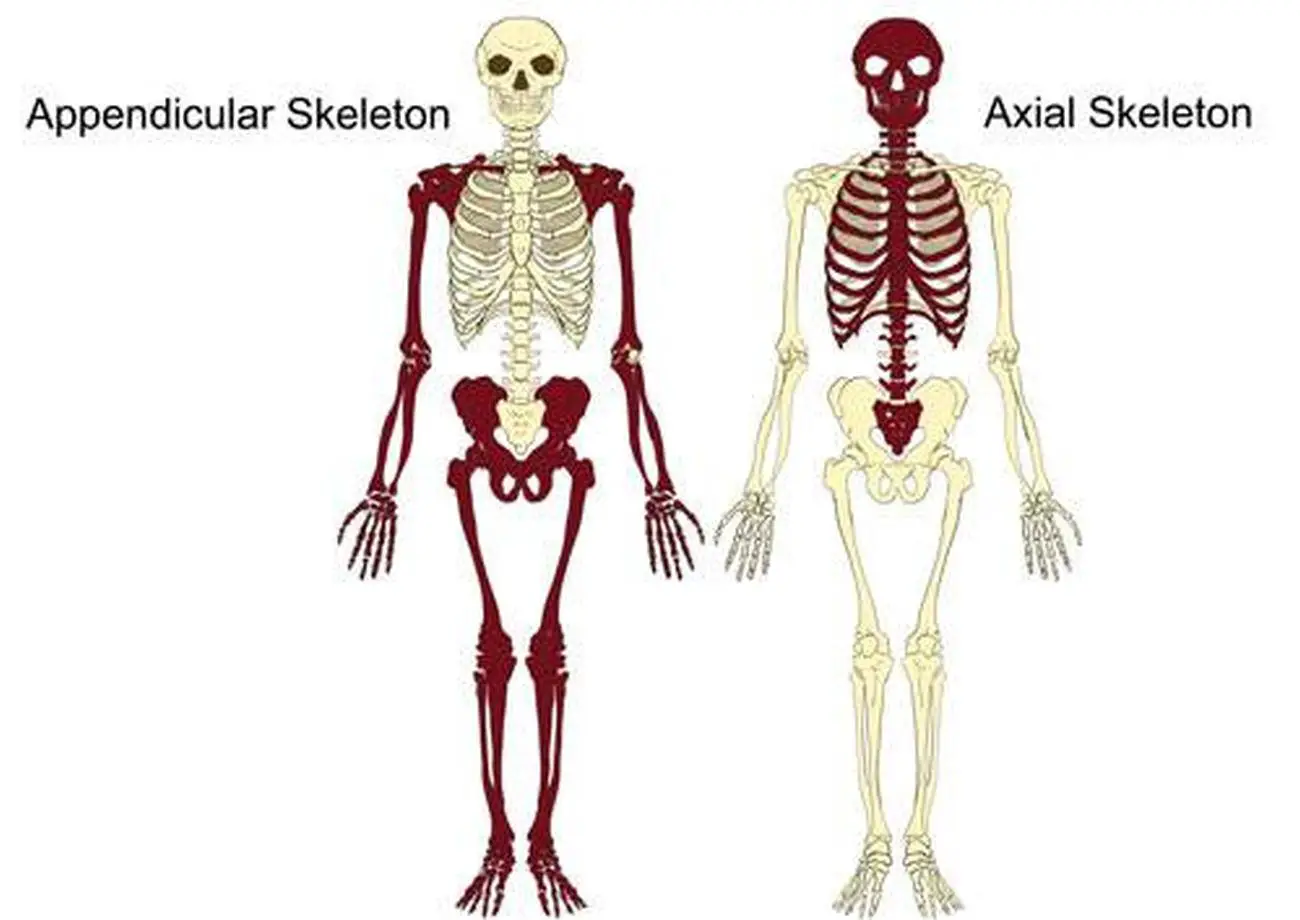
Pictures Of Axial Skeleton
Axial Skeleton. Your axial skeleton is made up of the 80 bones within the central core of your body. This includes bones in your skull (cranial and facial bones), ears, neck, back (vertebrae, sacrum and tailbone) and ribcage (sternum and ribs). Your axial skeleton protects your brain, spinal cord, heart, lungs and other important organs.

Rangka Aksial dan Rangka Apendikular (Rangkuman Materi Sistem Gerak Part3)
The axial skeleton consists of all the bones in the central part of your body. This includes everything from your skull and ears to your neck, breastbone (sternum), spine, and ribcage. There are 80 bones in the axial skeleton. They protect important organs and structures in your body such as your brain, heart, lungs, and spinal cord.